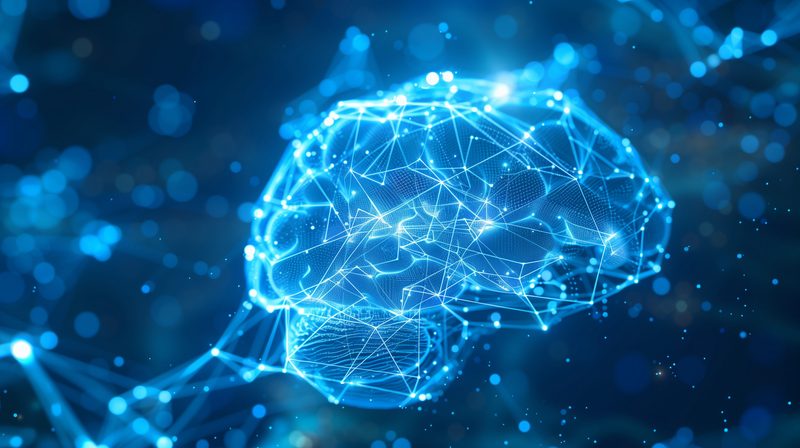What Are Neural Networks?

You have probably heard the term neural network used when people talk about artificial intelligence (AI). It sounds complex, but the core idea is simple: a neural network is a kind of computer system that learns from data. Inspired by the structure of the human brain, but not actually functioning like one, this system finds patterns in large amounts of information and makes predictions or decisions based on what it finds.
Neural networks power things you probably use every day: voice assistants like Siri or Alexa, video games, movie recommendations from your streaming services, and email filters. This article breaks down the types that exist, how they work, and where you see them, and does so without jargon and with real-life examples you’ll recognize.
1. Neural Networks in Plain Language
Think of a neural network as a layered system that processes information step by step. It starts with an input layer that receives data, such as a sentence, an image, or a sound. That data flows through one or more hidden layers, where each layer extracts useful features. Finally, it reaches an output layer, which produces a result.
Each layer sends data to the next layer, shaping the input into something more meaningful. That’s it. No mystery. Just a structured way for machines to handle complex information.
Example: When you upload a photo to a social media app and the app suggests a caption, a neural network has processed the image, identified certain elements, and used training data to suggest a relevant sentence.
2. A Quick History: Where It Started
The concept of the artificial neural network dates back to 1958, when psychologist and AI pioneer Frank Rosenblatt introduced the Perceptron, an electronic device based on biological structures and had the capacity to “learn.” It had a simple structure: one input layer and one output layer, with weights that adjusted based on the outcome. It could learn basic patterns, but struggled with anything too complex.
Fast forward to today, when we have deep neural networks, which are neural networks with many hidden layers. These layers give the system the flexibility and power to detect subtle patterns, relationships, and anomalies.
Example: In the early days, a model might distinguish between squares and circles. Today, deep learning models can help analyze legal contracts, a collection of proposals, or detect fraud based on transaction behavior.
3. How a Neural Network Works
Let’s break it into three parts:
- Input layer: The raw information, for instance, the pixels in an image or the words in a sentence, enters the system at this layer.
- Hidden layers: These layers work in stages. Early layers might highlight edges in a photo and detect shapes. Later layers combine those features into something recognizable, like a stop sign or a handwritten number.
- Output layer: This final layer produces a result, such as a labeled image or a prediction about what word comes next in a sentence.
Each step is mathematical, not magical. The network adjusts its internal values over time to improve accuracy. It doesn’t understand what it’s doing in the way people do, but it handles structured information very effectively.
4. Why Neural Networks Matter
Neural networks are useful when there’s a need to recognize patterns in data, especially at a scale that would be impossible for a person to handle manually. They are the foundation of much of today’s machine learning and deep learning models, working behind the scenes to find structure in complex, high-volume data, whether that is images, sounds, or words.
They help with:
- Sorting emails by detecting key phrases and behaviors to identify spam or categorize messages
- Recognizing speech by interpreting audio waveforms and converting them into words in real time
- Translating text by learning connections between languages through examples, not just grammar rules
- Recommending products or movies by identifying patterns in your browsing or viewing history and comparing them with others
- Detecting objects in images by scanning pixel patterns to highlight people, animals, or objects even when they appear in new settings or angles
Example: When you search for a photo of your dog in your phone’s gallery, a neural network has already labeled the photos using convolutional neural networks trained on thousands of similar images. These networks break down each images into parts, such as edges, shapes, and textures, and use what they have “learned” to tag “dog” even if your pup is wearing sunglasses or sitting in a crowd.
5. Types of Neural Networks (and Where You’ve Seen Them)
Feedforward Neural Network
This is the simplest structure. Data moves in one direction: from input to output. There are no loops or cycles, which makes these networks easier to design and train. They’re ideal for straightforward classification or regression tasks when past data doesn’t affect the present decision.
Example: A system that predicts whether a loan application should be approved based on your financial details is likely using a feedforward neural network. It takes your income, credit score, and other variables, runs them through layers of analysis, and outputs a decision without needing to remember previous applicants.
Convolutional Neural Networks (CNNs)
These are especially good at analyzing visual data. Instead of examining every pixel, they use filters to scan for patterns like corners, textures, and edges. These patterns are then combined to understand the overall content of the image.
Example: CNNs help power facial recognition features, whether on your phone that unlocks with a glance, or in security systems that identify individuals. They’re also used in medical imaging to detect irregularities like tumors or fractures with high precision..
Recurrent Neural Networks (RNNs)
RNNs handle sequences of data and are built with loops that allow information to persist across time steps. This memory-like behavior makes them ideal for tasks for which previous inputs influence what comes next, like speech recognition or sentence prediction.
Example: When you’re typing a text and your keyboard suggests the next word, that suggestion likely comes from an RNN trained on common language patterns. It doesn’t just guess from the current work, it remembers what came before to offer a smoother, more natural prediction.
6. How Neural Networks Learn
To make accurate predictions, a neural network must first train on examples. These examples, called training data, come with labels. If you’re teaching a network to recognize photos of cats, the training data includes thousands of labeled images of cats. The network adjusts its internal weights to minimize error. If it mislabels a cat as a dog, it shifts slightly to get closer to the right answer next time. With enough repetitions and enough data, the network improves.
Example: A streaming platform recommends a new documentary based on what you’ve watched before. That recommendation system has learned from past user choices, yours and millions of others.
7. Neural Networks in Your Daily Life
Here’s where you’re already seeing them:
- Smartphones and Personal Tech
- Natural language processing helps your phone understand voice commands.
- Autocorrect uses a neural network to guess what you meant to type.
- Photo apps group images based on faces, scenes, or locations.
- Professional Settings
- In hospitals, convolutional neural networks scan medical images for early signs of disease.
- In customer service, chatbots use natural language processing to understand and respond to customer questions.
- Entertainment and Games
- Video games use neural networks to improve in-game character behaviors, adjust difficulty levels, or personalize player experiences.
- Music and video services suggest what to listen to next based on previous choices and broader viewing trends.
8. What Makes a Neural Network “Deep”?
A deep neural network has many hidden layers between input layers and an output layer. These hidden layers serve as filters, with each one extracting more detailed information from the data as it moves through the network. Every layer adds another level of analysis and refinement. Imagine it’s like stacking layers of a multi-tiered cake, with each tier adding richness and depth to the whole. With every layer, the network learns to capture more complex features of the data, helping it move from identifying simple patterns to sophisticated problem-solving and other complex tasks.
Deep networks can:
- Separate background noise from voices by processing sound across multiple layers that distinguish speech from static
- Translate full sentences, not just words, by capturing context, grammar, and meaning across different languages
- Analyze thousands of variables in financial forecasts by breaking down intricate patterns and relationships that affect markets
9. Neural Network Architectures: Choosing the Right Tool
The way a neural network is built, in a word its architecture, can make a big difference in performance. Some architectures handle images expertly, while others are optimized for time-based sequences or decision-making.
Here are three common use cases:
- CNNs for image and video analysis
- RNNs for speech, text, and anything with a time sequence
- Feedforward networks for classification and prediction tasks
Choosing the right architecture depends on the task, the data, and how precise the outcome needs to be.
10. The Road Ahead
Neural networks continue to evolve. More efficient designs, faster training methods, and larger training data sets are pushing performance forward. But even as breakthroughs emerge, the core structure remains the same: layers of processing steps, each building on the last to extract insight from data.
In the future, you can expect:
- More personal and responsive digital assistants that learn your habits and adapt to your tone
- Smarter traffic systems that predict congestion by analyzing movement patterns across cities
- Real-time translation tools with high accuracy, even for idioms, slang, and informal speech
- Enhanced proposal writing systems that can draft and refine business proposals by learning from your successful proposals and identifying effective phrasing, structure, and pitch strategies for specific customers or industries
Example: New video game engines may use neural networks to adjust storylines or character interactions in response to gameplay history. In other words, they won’t be based on understanding but based on recognized patterns in data that reflect your play style and choices.
The road ahead is not just about making smarter machines, it’s about creating tools that learn from us, support us, and uncover new possibilities we might not have seen on our own.
From Complexity to Clarity
Neural networks are not magic. They are not thinking machines. They are incredibly powerful and useful pattern recognizers built to sift through massive amounts of data and find meaningful connections. While the terminology borrows from biology, like neurons and layers, the networks’ function is rooted in mathematics and logic. They operate through data-driven learning, not consciousness or emotion.
Whether it’s helping a doctor interpret a scan, guiding traffic flow in a smart city, helping you find the next show to binge, or assisting you draft winning business proposals, the job of a neural network is the same: Take in data, recognize patterns, and produce a useful result.
Once you know that, you’ll start noticing neural networks all around you. And you’ll know that they are not mysterious black boxes, but powerful tools woven into the technology that powers daily life.
Your next winning proposal could be just one prompt away. Discover AutogenAI.


